Home Through the Looking Glass: An Interview With nDreams
“Anything one man can imagine, other men can make real.”
–Jules Verne
by NorseGamer, HSM Editor-in-Chief
In a recent discussion during an episode of The Upload, an interesting question was raised: what are the elements of a successful virtual commodity in Home?
This discussion arose because there are some public spaces in Home which — though lovingly rendered and painstakingly detailed — are sort of…well, empty. They just lack that certain something which entices people to come back. Same goes with clothing and furniture.
Home, which saw tremendous expansion in 2011, isn’t exactly lacking for content any more. And once the novelty of a new virtual commodity or space has worn off, it has to have something unique to set it apart from the rest. In short: it seems that where developers shine in Home is when they push the depth of the virtual experience, moreso than the breadth of it. One way to do this is to play with the definitions of reality itself; Home is at its best, perhaps, when it provides an experience that’s beyond what the real world is capable of, or beyond what we will likely experience within it.
One developer, in particular, is brilliant at pushing the envelope.
I absolutely love nDreams. nDreams, to me, is Home viewed through the prism of Terry Gilliam’s mind when he hasn‘t been allowed to sleep for a few days. nDreams holds Home by its feet, upside-down, in front of a funhouse mirror inside a TARDIS, and shakes it repeatedly to see what falls out of its pockets. And the results are always outstanding.
Let’s do a quick recap of some of the highlights.
The Pirate Galleon personal space, which was one of the first private estates to have music in it.
The Musicality Apartment, which to this day is the only place in Home that allows you to create your own music (and, if properly configured, can be an amazing party pad).
Aurora, which bends the concept of virtual reality harder than David Bowie when he sang to Jennifer Connelly whilst walking sideways through the labyrinth.
All of this barely scratches the surface of nDreams. And with Blueprint now upon Home, we simply had to touch base with these guys and see what they’re up to. The nDreams interpretation of Home feels much like how I imagine it would be to take the red pill from Morpheus, crack open Clarke’s monolith and find Lewis Carroll sitting inside it, offering a cup of tea.
So now then: come with us now as we find out just how deep Home’s rabbit hole goes.
HomeStation Magazine: Thank you for consenting to this interview. Let’s start with the War Room. This isn’t just a new clubhouse skin for Home, but in fact a clubhouse with two unique functions: the transporter and the lecture podium. Tell us about these.
nDreams: As our first clubhouse, we decided that the War Room needed to deliver functionality that would be useful for clubs and groups meeting in the space. The lecture podium was designed as a way to avoid those horrible conversations where everyone is talking at the same time; one person is able to address the entire clubhouse at a time, with their face and text displayed on the big screens on the walls. The transporter is an early version of something we’re aiming to put into all our spaces in the future, allowing players to quickly jump between spaces.
HSM: The podium, in particular, is a very unique feature in Home. What was involved technologically to pull it off, and why hasn’t anyone developed anything like it before? Did Home’s core client have to be updated to a point where this was feasible?
nDreams: We believe it has only been technically feasible for a few months – the Home client is improving rapidly all the time. But it’s also likely that no-one has thought of doing it before; it’s a feature that makes much more sense in a clubhouse than an apartment or public space.
HSM: Take us through the concept of the War Room. Why did nDreams specifically decide to create this as their first clubhouse skin? What audience is it hoping to target?
nDreams: There seem to be many people in Home who like playing “triple-A” PS3 games either on Blu-ray or downloaded from the PSN. The War Room was designed for them – for people that like games that involve sci-fi or weapons, or who want to meet up before a gaming session.
HSM: Let’s set the scene for a moment. What are the origins of nDreams as a company, and did it become involved in Home? What’s the origin behind the company’s name?
nDreams: Patrick O’Luanaigh formed nDreams just over 5 years ago after leaving his role as Creative Director at UK publisher, Eidos. nDreams was created to make innovative digital-only games. We’ve grown from just Patrick (on his own in a tiny office) to a team of almost 30 people (more if you include external partners). We first became involved in Home after listening to a talk from Pete Edward, who heads up the core engine team, at the Edinburgh Interactive Festival. Patrick pitched an idea for a mysterious ARG in Home to a few people at Sony, and Xi was born. With regard to the name, the ‘n’ is used like in Mathematics, where n represents any number from zero to infinity (we have so many ideas, concepts and ‘dreams’…!)
HSM: nDreams is hardly a new player on the Home scene; 2011 was another banner year for your company, and if we go further back, you realized over one-million pounds in revenue during the 2010 fiscal year, whilst involved in no less than twenty-three different Home projects. Yet not everyone realizes that nDreams has a multitude of ventures that reach far beyond Home, including your new Unite Entertainment division. What projects would you say have been the most successful for nDreams so far?
nDreams: Aurora has been the most successful commercially, whilst Xi or Lewis Hamilton:Secret Life have probably been the most successful creatively. We’ve created a couple of big ARGs, built some Facebook games for brands, but we’ve come back to working almost exclusively on PlayStation Home. Unite Entertainment was an experiment to split “making games for brands” away from “making our own original games”. It was a useful experiment, but in the end we decided that it’s much more fun and profitable not working for brands/advertisers and creating our own concepts instead! We’re currently making quite a few Xbox Avatar costumes and props, but the vast majority of our efforts are focused on PlayStation Home.
HSM: nDreams has completed two extremely popular Alternate Reality Games (ARGs): Xi, in partnership with Sony Computer Entertainment, and Lewis Hamilton: Secret Life in partnership with Reebok. (For the Americans reading this, Lewis Hamilton is considered one of the greatest Formula One racing drivers alive today.) Xi, in particular, is often regarded as the high-water mark of Home. Could you give us some insights into how these projects came about, and what goes into creating them?
 nDreams: We loved making both these projects – making a ‘live’ game with a story that opens up over time is quite a challenge, but we love narrative and both games were very successful. In particular, Xi will always have a very special place in our hearts since it was our first nDreams project to go live. Both projects took a lot of effort before launch – between 6 and 12 months of development in both cases, writing story, building websites, creating games, filming videos and much more.
nDreams: We loved making both these projects – making a ‘live’ game with a story that opens up over time is quite a challenge, but we love narrative and both games were very successful. In particular, Xi will always have a very special place in our hearts since it was our first nDreams project to go live. Both projects took a lot of effort before launch – between 6 and 12 months of development in both cases, writing story, building websites, creating games, filming videos and much more.
HSM: Has there been any discussion about introducing a new ARG to Home?
nDreams: Yes. ![]()
HSM: Your public space for Home — Aurora – has seen several updates, introducing new content. It’s been stated that Aurora will be nDreams’ “headquarters” in Home; can you give us some description of what sort of updates or enhancements might be made to Aurora in the future? Will it mostly revolve around major holidays, or will there be other new features introduced?
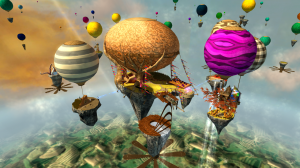 nDreams: We’re aiming to update Aurora every 2-3 months. Version 1.5 will launch very soon, and version 1.6 (probably the biggest update so far) should launch 2-3 months later. We’ll be introducing new reasons to come back regularly, some ways to level up quicker in Orbrunner, a big new game and some other major additions.
nDreams: We’re aiming to update Aurora every 2-3 months. Version 1.5 will launch very soon, and version 1.6 (probably the biggest update so far) should launch 2-3 months later. We’ll be introducing new reasons to come back regularly, some ways to level up quicker in Orbrunner, a big new game and some other major additions.
HSM: When looking over the content nDreams has created for Home, one thing that immediately stands out is the surrealism of it all. You don’t just release a new clothing line: you release fantasy apparel. You don’t just release virtual pets; you release UFOs. You don’t just release a new personal space: you release Aurora, a wondrous fleet of airships that feels like it came straight from the pages of Robur-le-Conquérant. Is this by intentional design, or simply a reflection of the personalities of the creators behind it all?
nDreams: Home is a virtual world where anything is possible. Why re-create someone that already exists in the real world when you can make something totally unique? Part of the ethos of nDreams is to try new things and always try to innovate. So making 100 pairs of shoes that exist in the real world isn’t something that excites us, even though it might be profitable; we’d rather create a unique outfit with animations like the Ninjutsu range, the Grim Reaper or the L’il Ninja!
HSM: In your opinion, what are the elements of a successful virtual commodity in Home — be it clothing, furniture, private estates, or public spaces? What creative boxes must be checked off on the list before nDreams considers something worthy of deployment?
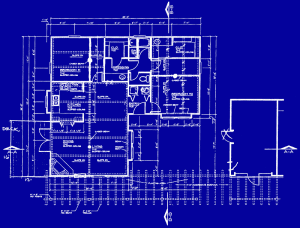 nDreams: We do try hard to focus on quality and giving people something different and unique. We’re also quite ambitious – something that hopefully will become apparent with the big three non-Aurora projects that will launch later this year in Home. If you’re reading this interview towards the end of 2012, look back on what we’ve launched and you’ll see what I mean!
nDreams: We do try hard to focus on quality and giving people something different and unique. We’re also quite ambitious – something that hopefully will become apparent with the big three non-Aurora projects that will launch later this year in Home. If you’re reading this interview towards the end of 2012, look back on what we’ve launched and you’ll see what I mean!
HSM: Can you divulge any tidbits on projects you currently have in development for Home? Coming attractions, so to speak?
nDreams: All I can say is that three of the biggest projects we have ever created are launching this year in Home. All three are very different, and all are quite epic in size and ambition. Plus we have a couple of unique new apartments, more companions, more amazing animated outfits and lots of Aurora goodness on the way. It’s going to be our biggest year in Home ever. We’ve had a very quiet start but from May until the end of the year, hang on to your hats….
One thing that I personally came away from this interview with: a sense of awe. These people are in the business of creating dreamworlds for us to populate. When they release a new commodity into the virtual reality of Home, they reach an audience of millions. Yes, radio and television can command equally impressive market share, but there’s one very important difference: for the most part, radio and television aren’t interactive. Virtual realities, on the other hand, are. In Home, you are what you create.
Virtual societies are still relatively young; the internet itself has really only been widely available for less than twenty years, and interactive virtual 3D worlds (akin to Home) haven’t been around for more than about seven or eight years. When put in context, it becomes readily apparent that only the proverbial tip of the iceberg has been explored so far. And it is companies like nDreams which are leaving indelible imprints in the still-wet concrete of virtual reality.
A sense of awe, then, seems par for the course. And, perhaps, even a bit of envy. After all, who wouldn’t want to get paid for building dreamscapes that millions of people will enjoy? As job descriptions go, that one’s pretty fantastic.
HomeStation Magazine would like to express its gratitude to nDreams for this interview, and it is our hope that you, our audience, will continue to support and enjoy the products they provide. nDreams has already made quite an impression on the Home community, and it is a safe bet that they will continue to do so for the foreseeable future.


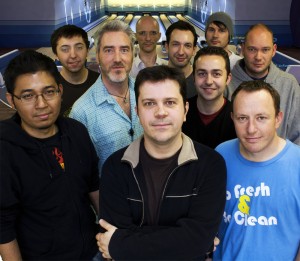

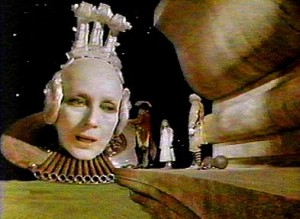
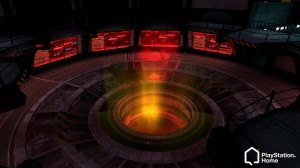
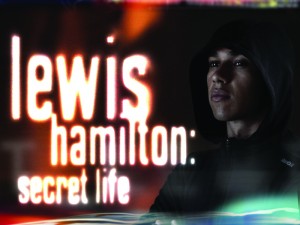
 LinkedIn
LinkedIn Twitter
Twitter
Very Nice I can’t wait til we see what lies on the virtual horizon from these folks! Nice interview.
Really looking forward to Blueprint it looks fantastic. Not forgetting the big reveal on what’s under that tent! Can’t wait.
I love your tribute video! Very nice Blake quote… and the dream theme. I always said I liked Aurora best because it was the least like reality and the most like a dream.
Great interview, looking forward to Aurora 1.6!